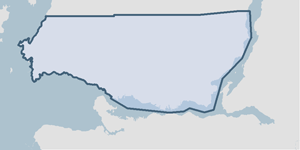Metadata for Trails for Public Use
Identification
- File Name
- TrnTrailPublic
- Feature Dataset
- Transportation
- Ownership
-
District of North Vancouver
355 West Queens Road, North Vancouver, BC, Canada, V7N 4N5
Spatial
- Extents
-

- Coverage
-
West:
Not Applicable
East: Not Applicable
South: Not Applicable
North: Not Applicable - Coordinate System
- Not Applicable
- Projection
- Not Applicable
File Properties
- Data Type
- Feature Class
- Data Format
- ESRI Enterprise SDE
- Geometry Type
- Not Applicable
- Topology
- Not Applicable
- Spatial Index
- Not Applicable
- Linear Referencing
- Not Applicable
History
- Date Posted to GIS:
- 1999
- 1996: The Parks department purchased a backpack GPS unit for the purposes of collecting the locations of many trails in the alpine region of the District of North Vancouver. Various temporary GIS staff collected GPS information on trails over a 3 year period with varying degrees of accuracy and success. By 1999 the majority of known trails were collected in the alpine region and were entered into the GIS. Between 1999 and 2003 additional trails in the developed region were added to the GIS mainly through digitizing marked-up maps which were supplied by Parks department staff.
- 2000: Additional trail information was supplied by North Shore Search and Rescue in Microstation CAD format. This data was translated into the GIS and added to the trail inventory as required.
- 2001: Additional trail information was supplied by the North Shore Mountain Biking Association (NSMBA). Detailed sketches of trails with their known names were added to the GIS from marked-up maps.
- 2003: The accuracy of trails information was improved, wherever possible, based on the latest orthoimagery. Also in 2003, the trails feature class was physically divided into two feature classes: Public Trails and Non-Public Trails. In 2011, difficulty ratings were assigned to most trails in the District of North Vancouver.
- 2013: As part of the DNV's continuing asset management program, urban trails and pathways were walked with GPS to confirm location and asses condition.
Quality
- Accuracy
-
- Many collected via GPS survey and others digitized from marked-up maps.
- Spatial information is collected and entered using the best method applicable to this dataset.
- Spatial information is higly accurate and reasonably the best it can be.
- Where multiple collection/entry methods, the more accurate method is predominant throughout this dataset.
- Completeness
-
- Some spatial information may be missing.
- Most commonly used and lesser used trails are present. Most likely lesser known or new trails are not present.
Maintenance
North Shore Search and Rescue will submit a raw GPS survey file to the GIS department where the information is spatially corrected and the feature class is then updated as required. Alternatively, the Parks department may submit a marked-up map to the GIS department and the information updated as required.
Supporting Documentation
- Data Dictionary
- Not Applicable
- Relationships
- Not Applicable
- Rights
- Terms and Conditions of Use